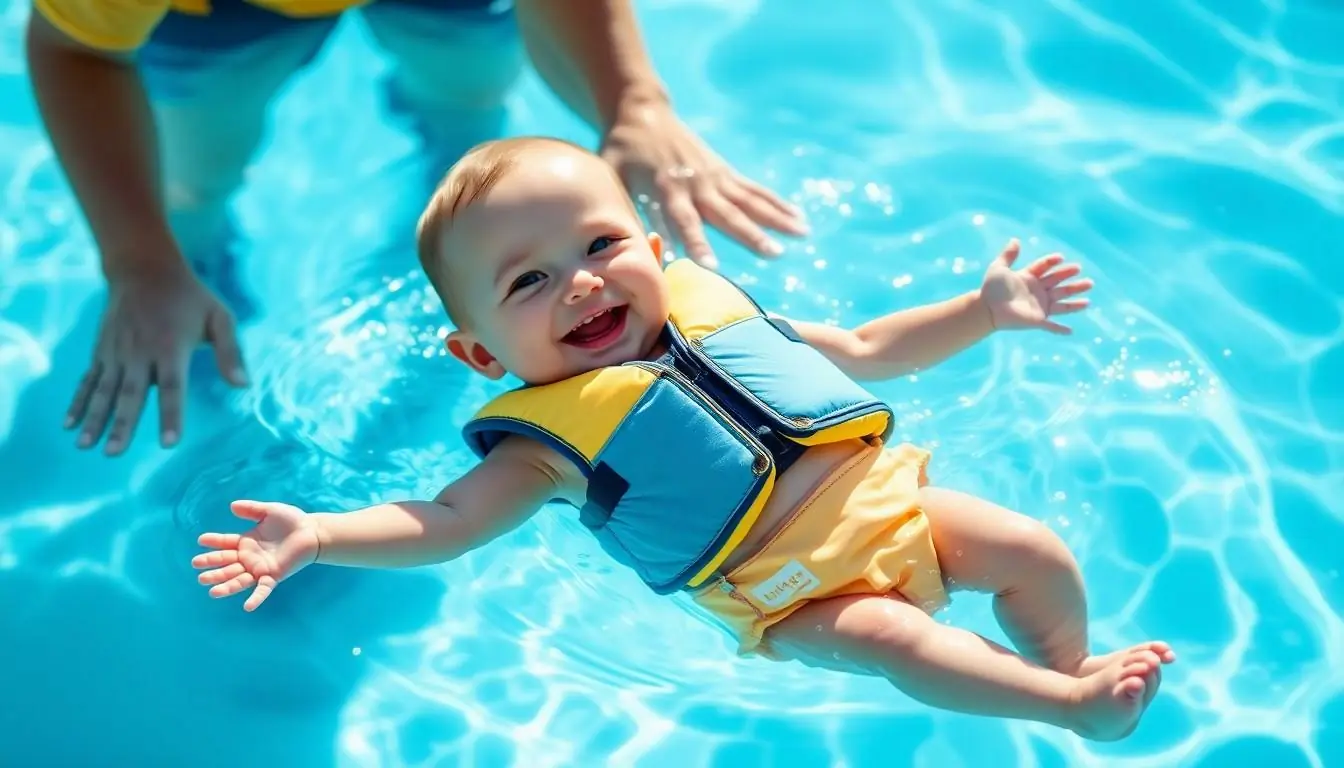When it comes to teaching infants how to swim, the stakes couldn’t be higher. Parents want their little ones to be safe and confident in the water, but who said learning has to be all splashes and no giggles? Enter the world of infant swimming resources, where safety meets fun and tiny swimmers make waves in the most adorable way possible.
Table of Contents
ToggleOverview of Infant Swimming Resource
Infant swimming resources focus on teaching infants essential swimming skills alongside safety measures. These programs aim to promote confidence and enjoyment in the water for children and peace of mind for parents.
What Is Infant Swimming Resource?
Infant Swimming Resource (ISR) serves as a specialized program designed for infants aged 6 months to 4 years. This program emphasizes self-rescue skills, enabling children to develop the ability to float and swim independently. Instructors implement techniques that support a child’s comfort in water. Parent involvement is crucial during lessons, fostering a supportive environment for learning and reinforcing skills at home.
Importance of Infant Swimming Skills
Developing swimming skills in infants significantly enhances safety during water activities. Drowning poses a substantial risk for young children, making these skills vital. Programs educate parents about recognizing dangers and ensuring supervision. Skills gained through ISR create a foundation for lifelong swimming proficiency. Confidence in the water cultivates a positive attitude, promoting future participation in aquatic activities.
Benefits of Infant Swimming Resource

Infant Swimming Resource offers numerous advantages that extend beyond water safety. These benefits contribute to a child’s overall development and ensure a positive approach to aquatic experiences.
Enhancing Water Safety
Water safety remains a top priority for parents. ISR equips infants with essential skills to promote self-rescue in emergency situations. According to the Centers for Disease Control and Prevention, drowning ranks as the leading cause of unintentional death for children ages 1 to 4. ISR focuses on teaching children how to float, roll onto their backs, and breathe, which significantly reduces the risk of drowning. Engaging in lessons fosters a sense of confidence in the water, allowing parents to feel secure during aquatic outings. By instilling these vital skills early, ISR prepares children for a lifetime of safe interactions with water.
Physical and Cognitive Development
Participating in ISR lessons enhances both physical and cognitive growth in infants. Swimming activities improve muscle strength, coordination, and balance. Engaging in repetitive motions develops motor skills, particularly in the core and limbs. Cognitive benefits arise through following instructions and problem-solving during lessons. Research suggests that infants exposed to swimming at a young age may experience enhanced brain development due to increased blood flow and stimulation. These combined physical and cognitive improvements enable young swimmers to thrive both in and out of the water, promoting overall well-being.
Methods and Techniques
Infant swimming resources use specific methods designed for teaching swimming skills to young children. Programs focus on safety and self-rescue techniques, ensuring infants become comfortable and confident in water.
Infant Swimming Resource Programs
Infant Swimming Resource (ISR) offers structured lessons tailored for infants aged 6 months to 4 years. Each session emphasizes age-appropriate techniques that cultivate self-rescue skills. The program incorporates fun activities to engage young learners while reinforcing important safety concepts. ISR lessons enhance muscle strength, coordination, and confidence in the water. Families benefit from a progressive curriculum that adapts as children develop their skills.
Parent and Instructor Engagement
Involvement of parents is crucial during ISR lessons to create a supportive learning environment. Parents participate actively, fostering bonds between caregiver and infant. Instructors provide guidance, ensuring parents understand techniques for practicing at home. Engagement helps reinforce lessons and builds confidence in both children and parents. Communication between instructors and families cultivates a sense of community and ensures safe aquatic experiences.
Potential Risks and Considerations
Infant swimming introduces both benefits and potential risks. Parents must understand these risks to create a safe environment.
Safety Precautions
Establishing safety measures remains crucial during infant swimming lessons. Parents should ensure that swim instructors are certified and knowledgeable in Infant Swimming Resource techniques. Supervision during lessons helps prevent accidents. It’s essential to avoid distractions, as undivided attention enhances safety. Pools must adhere to safety standards, including proper barriers and shallow areas for infants. Parents are responsible for knowing their infant’s comfort level, easing fears through gradual exposure. Regularly checking water temperature ensures it’s suitable for infants, promoting a positive experience.
Assessing Readiness for Infant Swimming
Determining readiness for swim lessons involves observation and assessment. Parents should consider their infant’s physical development, as good head and neck control indicates readiness. Baby’s temperament plays a role; inquisitive and adventurous infants often adapt more easily. Communicating with instructors can clarify expectations and gauge suitability for the program. Parents should monitor their infant’s reactions during initial interactions with water. Positive responses can signal readiness. A gradual introduction to water experiences fosters comfort and assurance, essential for success in swimming.
Investing in infant swimming resources like ISR can significantly enhance a child’s safety and confidence in the water. By focusing on self-rescue techniques and creating a supportive learning environment, these programs lay the groundwork for lifelong aquatic skills. Parents play a crucial role in this journey, fostering strong bonds and reinforcing lessons at home. With proper supervision and adherence to safety standards, families can enjoy water activities with peace of mind. Ultimately, the benefits of ISR extend beyond safety, contributing to children’s overall physical and cognitive development while instilling a love for swimming.




